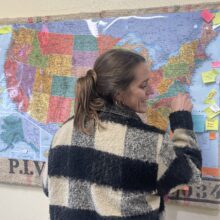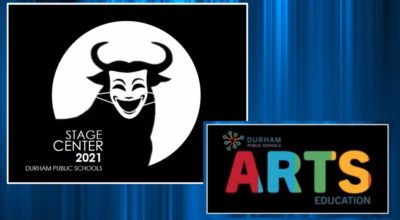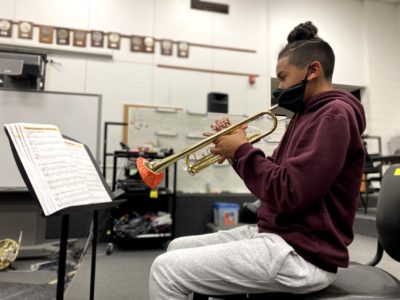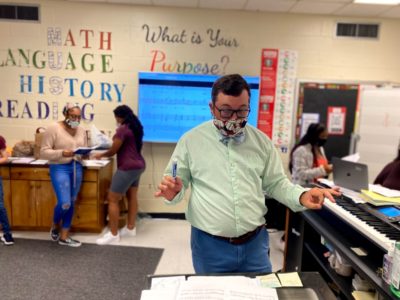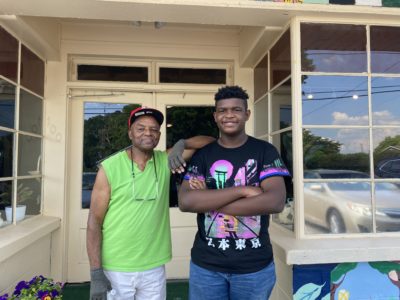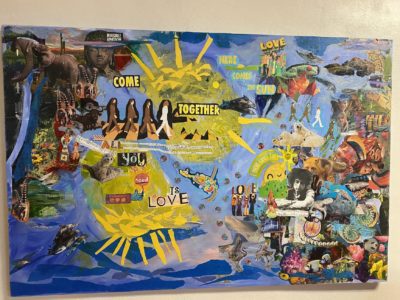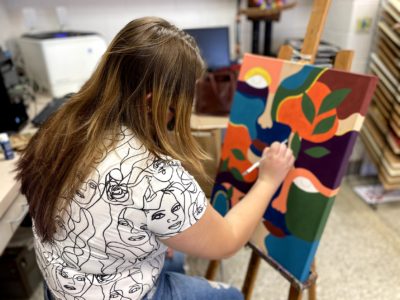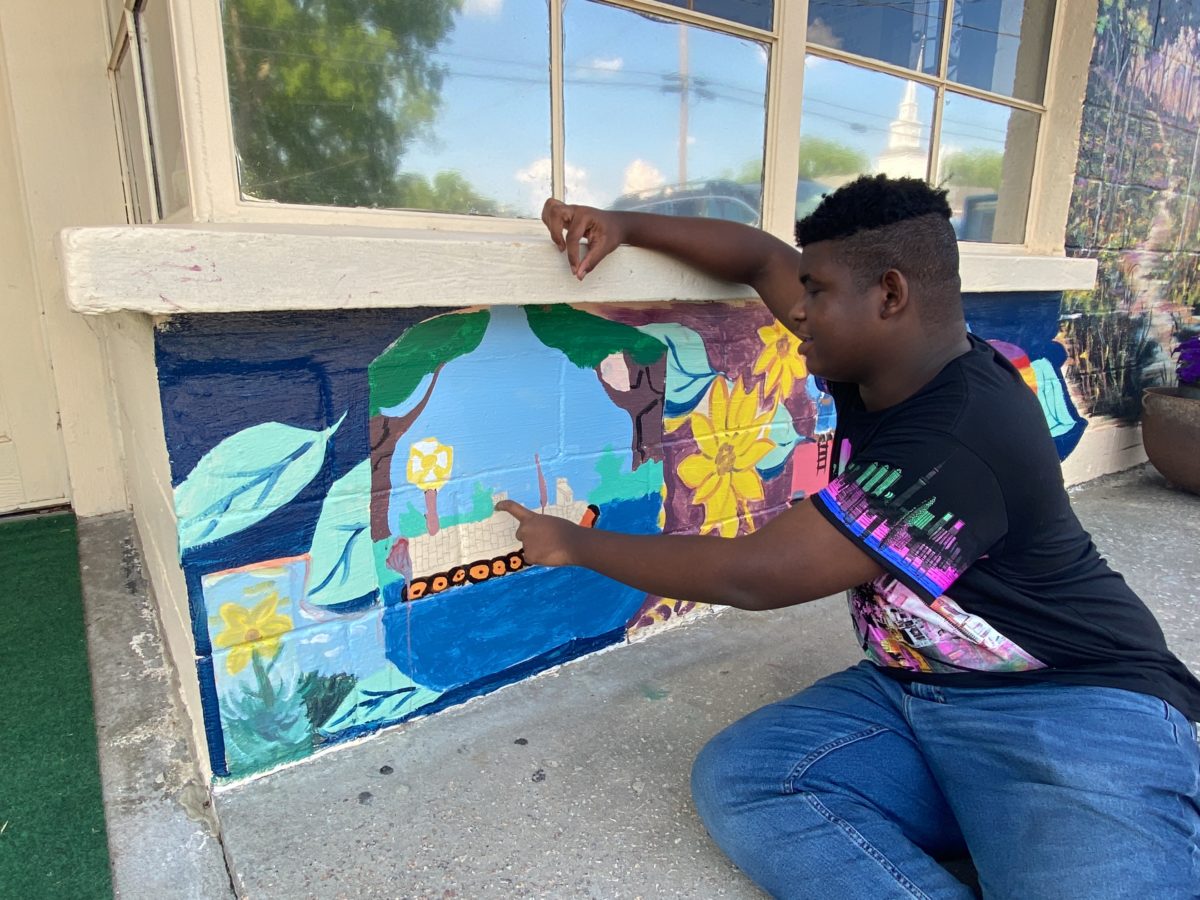

Share this story
|
|
Educators are reporting back to school this month to begin the 2022-2023 school year. With an ever-changing learning landscape, EducationNC wanted to know how school leaders felt about the state of arts education.
We reached out to superintendents, assistant superintendents, and other leaders in the spring asking them to fill out this survey. We want to understand how the pandemic impacted arts education throughout our state, and how those impacts created challenges and opportunities. (If you want to participate, the survey link is still open.)
Sixty-five leaders representing 60 school districts participated. Here are some of our results as of Wednesday, Aug. 10, 2022.
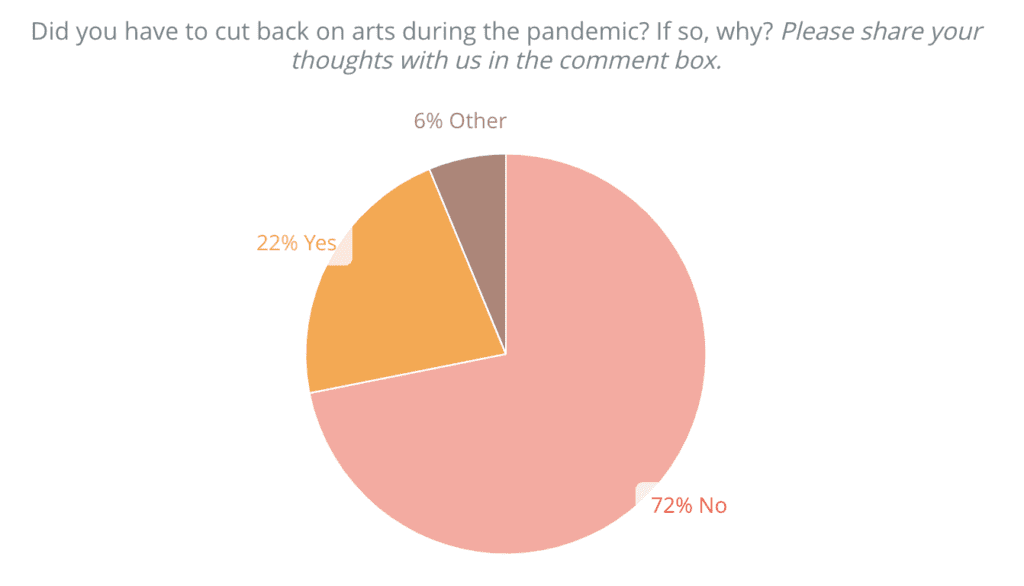

The first question asked, “Did you have to cut back on arts during the pandemic? If so, why?” Leaders from around the state cited that many in-person district events were cancelled. Challenges included remote learning, availability of teachers, vacancy of positions, and funding.
But some leaders highlighted the pivots made due to COVID-19 restrictions. One school’s performing arts department held drama club via Zoom, chose a new play that was adaptable for online, and performed live on YouTube. These alterations still allowed for three students to qualify for an international competition.
Finding creative ways to deliver arts education was key during social distancing. One respondent said, “I consider arts education as core along with other more traditional areas. If we are going to educate for the future, creativity is going to be critical. Arts are innately creative.”
In light of the Leandro case, we asked, “Do you believe providing exposure to the arts should be part of our state’s constitutional requirement to provide each child with a sound basic education?” Of the 47 respondents to our question, 42 answered yes.
Often times, the arts are considered elective courses and not part of core curriculum imperative to a student’s education. While art educators and leaders advocate for art to be considered as important as other focus areas, the pandemic spotlighted this issue.
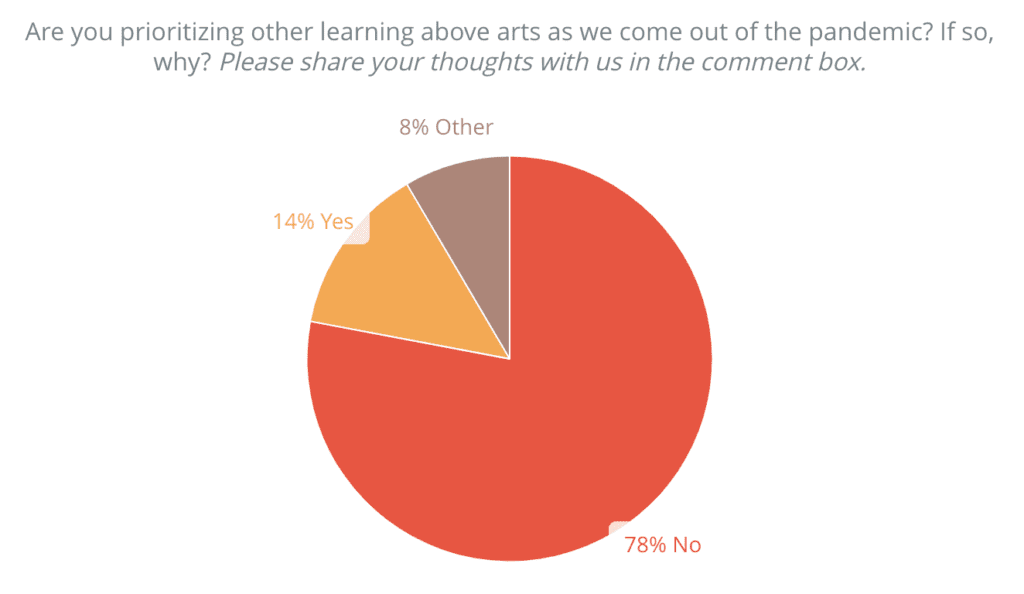

For the question “Are you prioritizing other learning above arts as we come out of the pandemic?” we heard from numerous leaders that remediation and learning-loss were of equal or larger concern than the arts. Though schools want to continue to offer equal opportunities for academic courses and arts, trying to minimize the impact of COVID-19 and that loss of in-person instruction has been a challenge.
“To some degree. Since the start of the pandemic, there has been a big push for social emotional learning–which is inherently included in the arts curriculum. However, time in elective classes/arts is sometimes adjusted to participate in tutoring for core classes.”
Respondent on the Arts and Education survey
Yet, the vast majority of respondents said their district is not prioritizing other learning above the arts. Our next question regarding funding had an overwhelming consensus as well.
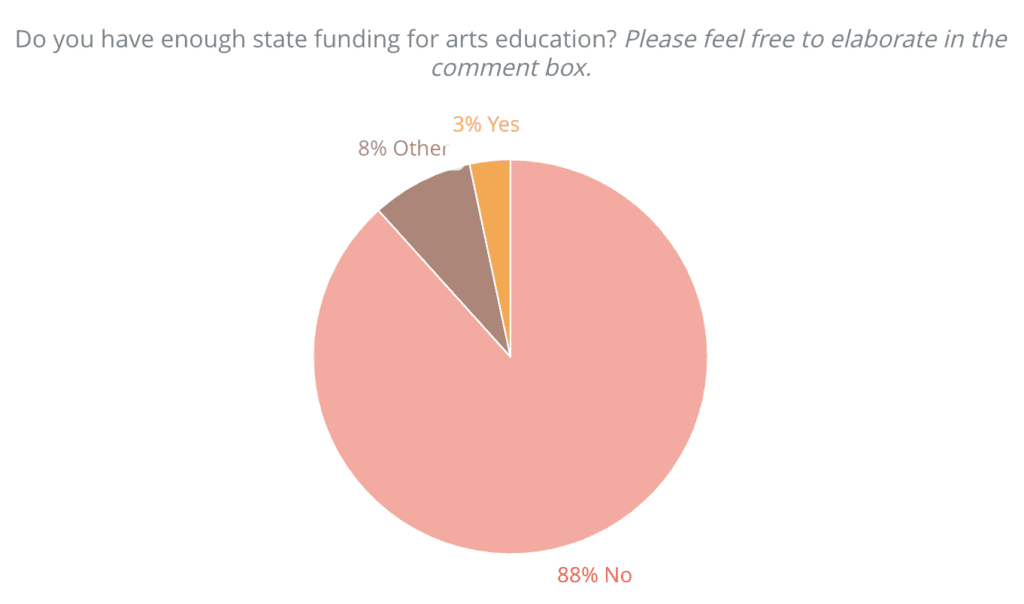

Out of the 59 respondents to this question, 52 said no. Two said they get enough state funding, and five chose other.
Of those that believe they do not have enough funding for arts education, many said their art teachers have to travel between schools or rotate throughout the year, which means art isn’t available all the time. Some districts rely on local dollars or grants to hire arts educators.
“We must insure arts education at every school without having to share personnel resources. Legislation pretends to support the arts with separate funding. In reality, the current funding structure provides a quick method to remove categorical funding.”
Respondent on the Arts and Education survey
“More state funds need to be directed to arts education for materials and supplies specifically targeted all arts education teachers. Currently, the state and local funds are not evenly dispersed by schools, so there is a huge gap in equity in materials and supplies.”
Respondent on the Arts and Education survey
“Small rural school districts need more funding to give kids exposure to the programs large school districts provide. We appreciate all we receive and the county is a low tax base county and cannot afford to only allocate what they can. Funding from the legislators would be the right thing to do if we are serious about a sound basic education.”
Respondent on the Arts and Education survey
Another respondent said, “we see our arts classrooms as a vital sanctuary for our students.” They continued, “Additional funding is critical because our arts teachers can, on a daily basis, help students through the chaos they have experienced during the pandemic, that sense of loss, and give those experiences some structure and meaning. Many of our students who are acting out in the hallways, let’s get them acting out on stage.”
One respondent noted change in legislation negatively impacted their ability to provide the arts. “We had more flexibility to fund these positions before the class size law was changed several years ago,” they said. “The new formula doesn’t generate the number of positions we had prior to the law change.”
Lastly, we wondered “What are the right questions for EdNC to be asking about our capacity to provide arts education in schools across NC?”
Our respondents are concerned about college pathways and the teacher prep pipeline, alternative licensure programs to fill vacant spots, equitable access, and, overwhelmingly, funding. Here are some of your questions:
Are the funding formulas used for enhancement positions adequate for teaching arts? What partnerships are in place to support arts education in rural communities? How does a rural school system access partnerships that are often more prevalent in larger cities across the state?
How do we foster an understanding of the relationship between arts education and the social emotional support our students have always needed, particularly at this critical moment?
How many arts teachers can retire in the next 5 years and how are universities recruiting students into the profession? We have struggled finding teachers to fill vacancies. What role does the arts have in our schools and how can we measure student success without measuring the arts?
What infrastructure/personnel changes are needed to provide arts in every school? How will NC artists and government entities work together to support the next generation of young arts supporters? Why are the arts — even with all of the research done about the positive effects of arts education — still treated as second-rate subjects?
Is Arts Education equitable across the state? Are ALL students given an opportunity to participate in Arts Education regardless of their school system demographics? What additional funding is needed to provide additional Arts Education?
An emphasis on how the Arts impacts attendance, behavior, engagement, and positive self esteem?Does the General Assembly recognize the impact that Arts Education has on other academics, mental health, self-esteem, and student success?
